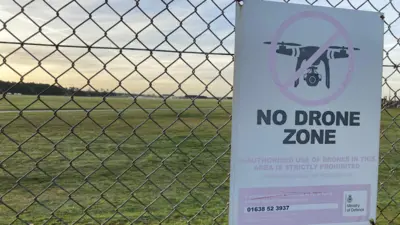We've updated our Privacy and Cookies Policy
We've made some important changes to our Privacy and Cookies Policy and we want you to know what this means for you and your data.
Obama signs Nasa up to new future
Top Stories
- Author, Jonathan Amos
- Role, Science correspondent, ≥…»ÀøÏ ÷ News
The US space agency (Nasa) has been given a new direction, one that will seek to put astronauts in orbit using privately-run launch services.
The change comes into effect with the signing by President Barack Obama of the Nasa Authorization Act 2010.
The legislation, passed by Congress last week, mandates the agency to fly the space station until 2020 and to launch one extra shuttle next year.
It also instructs Nasa to start work on a rocket for deep-space exploration.
Top Stories
The president's signature on the act brings to an end eight months of fractious debate on Capitol Hill about the future course of the agency.
Nasa's Administrator Charles Bolden told reporters: "Our nation's leaders have come together and endorsed a blueprint for Nasa, one that requires us to think and act boldly as we move our agency into the future. This legislation supports the president's ambitious plan for Nasa to pioneer new frontiers of innovation and discovery."
The act will mark a sea change in the way Nasa does some of its business, particularly in the realm of human spaceflight.
The legislation calls for $1.3bn to be allocated to the development of commercial crew services over the next three years.
The money will seed private companies to design and build rockets and capsules capable of delivering astronauts to the International Space Station (ISS).
The legislation also signals a formal end to the Constellation programme begun under President George Bush that sought to return humans to the Moon with a new spaceship called Orion and two new rockets called Ares 1 and Ares 5.
Some $9bn was spent on Constellation. Much of its technology and know-how will now be directed into an alternative rocket system big enough to launch a spaceship, or at least some of its elements, on missions that go far beyond the ISS.
Top Stories
These ventures are likely to include asteroids and, eventually, Mars.
Legislators want Nasa to receive $11.5bn over the next six years to have the new heavy-lift rocket ready for operation by 31 December 2016.
Some critics of the legislation have questioned whether the funding being requested is sufficient for the task, but Florida Senator Bill Nelson who helped build bipartisan support for the legislation said it should be ample.
"If we can't develop a new rocket for $11.5bn, building on a lot of the technologies that were already developed in spending $9bn - if we can't do it for that then we ought to question whether we can build a rocket."
The act authorises $19bn for Nasa in the federal year 2011, a significant increase on 2010.
This would allow the agency to expand its activities in a number of areas, including in Earth observation where some missions have been allowed to run past their nominal lifetimes without replacements being ordered up in time to prevent data gaps.
"I think it's wonderful that we're now at this stage," commented Dr Sally Ride, the first American woman in space and one of a group of experts tasked by President Obama with reviewing human spaceflight policy when he came into office.
"The extensive discussion of the president's budget and the deliberation of the elements of this bill I believe have resulted in legislation that will strengthen Nasa and the space programme."
The $19bn is not completely guaranteed. The money still has to be allocated by congressional appropriators, but Senator Nelson said he thought wide support on Capitol Hill for Nasa would ensure its activities were not denied funding as a result of more general arguments over federal spending and the need to reduce the nation's deficit.
Top Stories
More to explore
Most read
Content is not available








